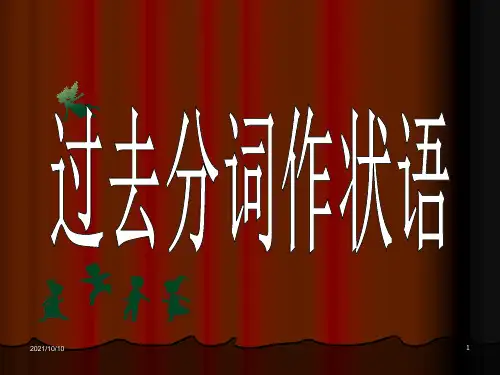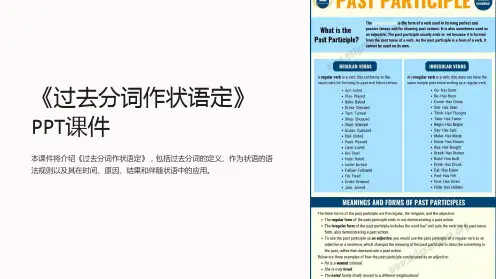重难点辨析(二):不表被动的特殊情况 注意:
1. Worried about the journey, I was unsettled for the first few days. 2. Exhausted, I slid into bed and fell fast asleep.
被动, 完成
⑤ The old man went into the room, supported by his wife. (伴随或方式状语)
5.过去分词+连词 过去分词作状语,常常可以在过去分词前加 连词(when, if, though, once 等),以起到强 调的作用,使句意更加明确。
6. 过去分词状语,相当于一个状语从句。 (伴随状语相当于一个并列句)
一般地(坦率地/确切地)说; Considering… 考虑到……; Talking of… 说到….;
Supposing/ Provided/ Providing that… 假使….; To be honest, /To tell the truth, 老实说;说实话
______ from his accent, he must come from southern China. A. Judged; B. Judging ; C. To judge D. Judge
流连忘返
Revision: 现在分词做状语
一.过去分词作状语的基本用法: 被动 1. 过去分词与句子主语之间构成_______ 关系。
2. 过去分词的逻辑主语要和句子的主语一致。
3. 可置于主句前,也可置于主句后,用逗号与主句隔开。 4. 过去分词通常在句中充当以下几种状语:
① (When) Asked what had happened, he kept silent. (时间状语)







![过去分词作状语公开课[1]精品PPT课件](https://uimg.taocdn.com/357c636416fc700abb68fca8.webp)


